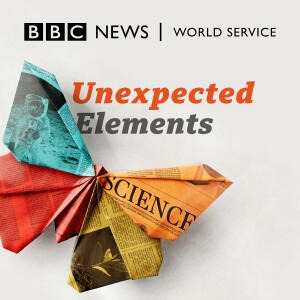
Science in Action talks to Nasa researcher Hannah Kaplan who is part of the team for the space agency’s sampling mission to the asteroid Bennu. Mission scientists were overjoyed this week when the probe Osiris Rex momentarily touched the asteroid and sucked up some of the sand and grit on its surface.
What might we learn when the sample is returned to Earth in three years' time? There is some not-such-good news about a theory about immunity to the pandemic coronavirus, and medical researchers in the UK announce the world’s first study that will deliberately infect volunteers with the novel coronavirus. The so-called challenge study is planned to begin in London in January. The purpose is to speed up the quest for effective Covid-19 vaccines but will it be safe for the participants? And there’s a new green chemistry breakthrough for tackling the world’s plastic waste crisis.
And All living things are related to each other, from elephants to algae, e-coli to humans like us. Within our cells we hold genetic information in the form of DNA or RNA. But despite viruses sharing these molecules, many scientists don't consider them to be 'life'.
Viruses cannot reproduce on their own, but some can insert their DNA into a host to pass genes sideways through the branching tree of life. As a result, viruses’ relationship with life is.... complex.
Two of our listeners had viruses on the mind, so they sent in the same question to CrowdScience. Senan from Singapore and Melvin from South Africa want to know how viruses began to see if this can tell us whether they shared a common ancestor with humans.
To dig into this complexity Marnie Chesterton speaks with an expert on Koala genetics – Dr Rachael Tarlinton. Koalas are in the middle of tackling a retroviruses, a type of virus that plants DNA into our cells as a reproduction strategy. Her research could reveal why humans life has so much viral DNA within our genomes.
Marnie speaks with a computational biologist Professor Gustavo Caetano-Anolles, who has found a new way to trace the family tree for billions of years using proteins common to all life on earth, and speaks with Professor Chantal Abergel who paints a picture of how viruses went from being the losers of evolution, to being highly successful parasites of cells.
(Image: Nasa probe Osiris Rex lands on asteroid. Credit Nasa)
view more
More Episodes
How plankton made mountains
 2024-02-01
2024-02-01
 2024-02-01
2024-02-01
Populations of people, frogs and microbes
 2024-01-25
2024-01-25
 2024-01-25
2024-01-25
Rulers and the rules of ageing
 2024-01-18
2024-01-18
 2024-01-18
2024-01-18
Super corals and science diplomacy
 2024-01-11
2024-01-11
 2024-01-11
2024-01-11
Timing is everything
 2024-01-04
2024-01-04
 2024-01-04
2024-01-04
The Best of Unexpected Elements
 2023-12-28
2023-12-28
 2023-12-28
2023-12-28
A very dark day
 2023-12-21
2023-12-21
 2023-12-21
2023-12-21
An exploration of empathy
 2023-12-14
2023-12-14
 2023-12-14
2023-12-14
Boring science
 2023-12-07
2023-12-07
 2023-12-07
2023-12-07
Meetings with intelligent worms
 2023-11-30
2023-11-30
 2023-11-30
2023-11-30
All about cricket(s)
 2023-11-23
2023-11-23
 2023-11-23
2023-11-23
Why we need to talk toilets
 2023-11-16
2023-11-16
 2023-11-16
2023-11-16
Working 70 hours a week
 2023-11-09
2023-11-09
 2023-11-09
2023-11-09
Scary science
 2023-11-02
2023-11-02
 2023-11-02
2023-11-02
Fashion to dye for
 2023-10-26
2023-10-26
 2023-10-26
2023-10-26
Putting Madonna to the test
 2023-10-19
2023-10-19
 2023-10-19
2023-10-19
How bedbugs took over the world
 2023-10-12
2023-10-12
 2023-10-12
2023-10-12
Complete shutdown
 2023-10-05
2023-10-05
 2023-10-05
2023-10-05
How inflation affects the entire cosmos
 2023-09-28
2023-09-28
 2023-09-28
2023-09-28
Can technology read our mind?
 2023-09-21
2023-09-21
 2023-09-21
2023-09-21
012345678910111213141516171819
Create your
podcast in
minutes
- Full-featured podcast site
- Unlimited storage and bandwidth
- Comprehensive podcast stats
- Distribute to Apple Podcasts, Spotify, and more
- Make money with your podcast
It is Free
- Privacy Policy
- Cookie Policy
- Terms of Use
- Consent Preferences
- Copyright © 2015-2024 Podbean.com



